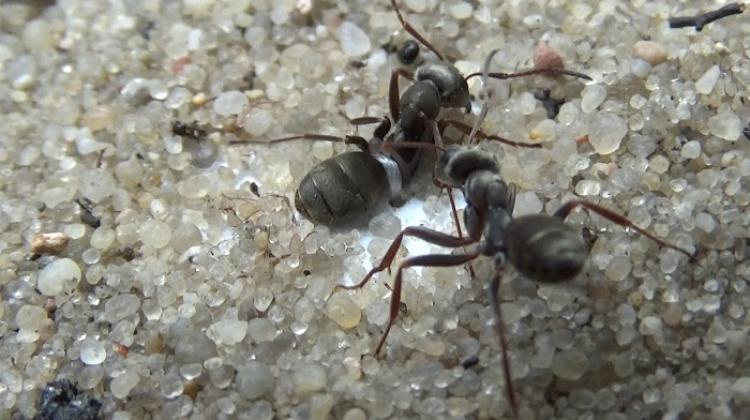Unusual paper protects art from fungi and bacteria

Fungi and bacteria can "eat" an old painting or printing stored in unsuitable conditions. This phenomenon may be prevented with antiseptic wrapping paper for works of art, which absorbs harmful compounds, told PAP Roman Gołąb from the Jagiellonian University.
Paintings, prints and manuscripts are extremely fickle and demanding objects. Sudden changes in temperature and humidity are particularly harmful to them. They can also be affected by harmful chemicals in the air, and by sunlight.
Therefore, scientists from the Jagiellonian University Paper Degradation and Stability Lab are developing a special paper for packing and safe storage of works of art. This paper can be used for the production of envelopes, folders, archival boxes and mats used in archives, museums and libraries.
"The paper should absorb all harmful substances emitted by the work of art in the process of natural aging. In addition, it will absorb acidic compounds, such as nitrogen oxides and sulfur dioxide, pollutants in the air caused by burning of fuels. It will also have antibacterial and antifungal properties, because fungi and bacteria can virtually +eat+ a painting or an old document" - said one of the inventors Roman Gołąb from the Jagiellonian University.
Researchers added a porous substance called zeolite to the paper, which absorbs harmful chemicals. In addition, they added silver nanoparticles with antiseptic properties. "After completion of the study and final determination of the composition of the new material we will be able to determine how long an envelope or folder can protect a work of art" - explained the scientist.
Currently, various kinds of special packaging are used for packing valuable works of art, but - as Roman Gołąb noted - none is capable of such a comprehensive protection of valuable documents. "In the United States, boxes that absorb nitrogen oxides are used, but they do not have antiseptic properties. These are indeed very expensive packages, the cost reaches several dollars per pack. We want our paper to be cheap and common" - said the scientist.
In addition to the works on antiseptic paper, Roman Gołąb is working on upgrading a device called microfadometer. It is used for measuring the resistance of paintings or materials to light, lightfastness testing. "With this device we can determine how the work of art will look in a certain period of time, such as 20 years, if it is exposed to specific conditions for several hours per day" - said Gołąb.
For now, the device design is quite complicated. It consists of several components: a light source (xenon lamp), optical system which exposes the sample to light and causes interaction with the dyes, and the second optical system, allowing to collect reflected light carrying information about colour changes. The result is recorded by spectrometer, and information about colour changes in a work of art aged with light are stored.
"We are refining the design of the device to obtain the best reproducibility of results. In addition, we want to put the multi-component system in one compact box. Then, we will only need to place the device near a painting to see how it will look in a few years" - described the scientist.
Kraków scientists want the device to be easy to use, so that not only measurement experts with good knowledge of chemistry can use it - such as conservators and museum staff. "They would get a box, press the green button and get the lightfastness result" - he added.
Currently, it is impossible to test original works of art. The device developed by Kraków researchers can test the material’s response to light by measuring the lightfastness on an area with diameter of only a quarter of a millimetre. Such test can be regarded as completely non-destructive and used for the analysis of precious works of art. Scientists at the Jagiellonian University have already examined some manuscripts, including Frederic Chopin’s, kept in the Jagiellonian Library.
Lightfastness tests of materials are presently carried out in laboratory aging chambers. "You can test a banner cloth sent by the manufacturer, but not a priceless work of art, it would suffer damage. We cut out a piece of cloth, put it in the chamber, measure the colour saturation, expose to light and see how the colour has changed, that is, what is the lightfastness of material" - explained Gołąb.
Devices similar to the Kraków microfadometer exist in the world, but they are only available in a few professional labs. Art collectors could order measurements from the lab, but themselves they would not be able to test how the image would look like in a few years. The situation may change with the device from Kraków. Scientists estimate that the invention can be marketed next year. "This, however, is only an estimation, and life writes different scenarios" - reserved Gołąb.
PAP - Science and Scholarship in Poland, Ewelina Krajczyńska
ekr/ agt/ mrt/
tr. RL
Przed dodaniem komentarza prosimy o zapoznanie z Regulaminem forum serwisu Nauka w Polsce.


















